Understanding and Honouring Khmer Culture
A Visitor’s and Expats Guide
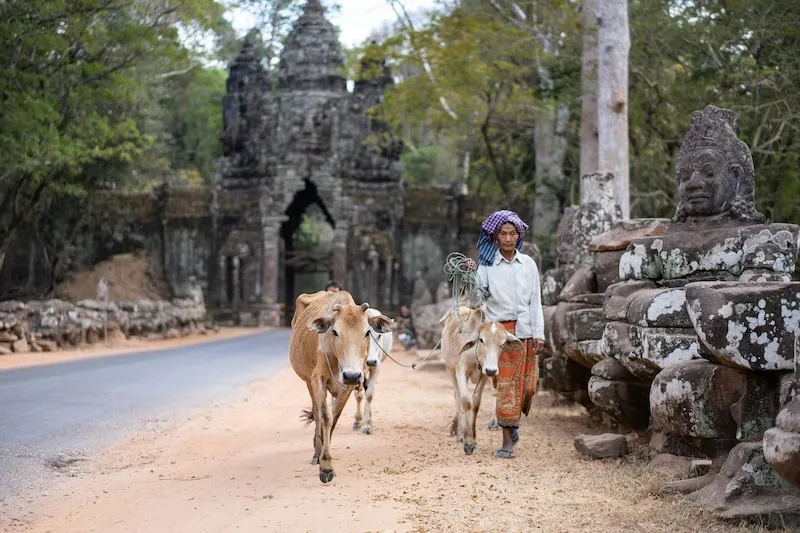
Cambodia, a land of ancient temples, lush landscapes, and some of the friendliest people you’ll ever meet, is steeped in rich cultural heritage and beauty. Whether you’re a visitor or an expat, understanding and honouring Khmer culture is key to a meaningful experience.
After all, no one wants to be that tourist who accidentally offends everyone by pointing their feet at a Buddha statue (more on that later). Or worse, that expat who tries to tell the locals how they should run their country, shop for things, pay for things, or even drive. So, grab a cuppa, and let’s dive into how to respect Khmer culture like a pro.
If you’re keen to dive deeper into some of the amazing places in Cambodia, Kampot and Kep’s authentic charm is not to be missed. Don’t miss Explore Kampot and Kep | An Authentic Cambodian Experience. These towns are like the hidden gems of the country – think of them as the Mary Berry of Cambodian destinations: understated, delightful, and utterly unforgettable.
1. Master the Art of the Sampeah (No, It’s Not a Dance Move)
The Sampeah is a traditional Cambodian greeting and a way of showing respect. To perform the Sampeah, raise both hands and place your palms together in a lotus-like fashion while bowing slightly. The word Chumreap Suor is often spoken when greeting someone, while Chumreap Lea is used when saying goodbye.
Khmer people value politeness, and nothing says ‘I respect Khmer culture’ like a warm smile and a proper greeting. Here’s how to master the Sampeah:
- Press your palms together like a lotus shape.
- Give a slight bow – the deeper the bow, the more respect you show.
- Keep your hands higher for added respect for monks and elders. You might want to hold the gesture longer during official meetings or when greeting older people.
- Don’t overdo it and lose your balance!
Before diving further, every foreigner should know how to perform the Sampeah correctly. There are five levels of the Sampeah, each showing a different level of respect:
- Chest Level:
- Used for friends or people of the same age or status.
- Hands are placed at chest level with a slight bow.
- Mouth Level:
- Used for people of higher status, such as older relatives, bosses, or respected individuals.
- Hands are placed at mouth level with a deeper bow.
- Nose Level:
- Used for parents, grandparents, teachers, or the elderly.
- Hands are placed at nose level with a respectful bow.
- Eyebrow Level:
- Used for monks, nuns, or royalty.
- Hands are placed at eyebrow level with a deep bow.
- Forehead Level:
- Used for sacred statues, temples, or when praying to Buddha.
- Hands are placed at forehead level with the deepest bow, sometimes touching the floor.
For more on Cambodia’s fascinating evolution, check out 6 Shocking Ways Kampot Has Changed – For Better or Worse to see how the town has transformed over time. Spoiler alert: it’s not all tuk-tuks and temple runs.
2. Dress Modestly (No, Your Bikini Isn’t Temple-Appropriate)
Cambodia is home to some of the world’s most stunning religious sites, like the iconic Angkor Wat. But before you rock up in your beachwear, remember: temples are sacred spaces, not Instagram photoshoot locations. Cover your shoulders and knees, and always remove your shoes before entering. It’s simple: respect Khmer culture by following the dress code, and you’ll fit right in. Also, driving, running, or walking around with your shirt off is a huge disrespect, and the Khmer will hold that inside forever, so get ready to be an outcast without even knowing you are.
If you’re curious about the sights that capture Kampot’s charm, 6 Kampot Riverside Charms To Love offers a deeper look into this town’s picturesque beauty, perfect for visitors seeking an authentic experience.
3. Respect Elders (Yes, Even More Than Your Nan)
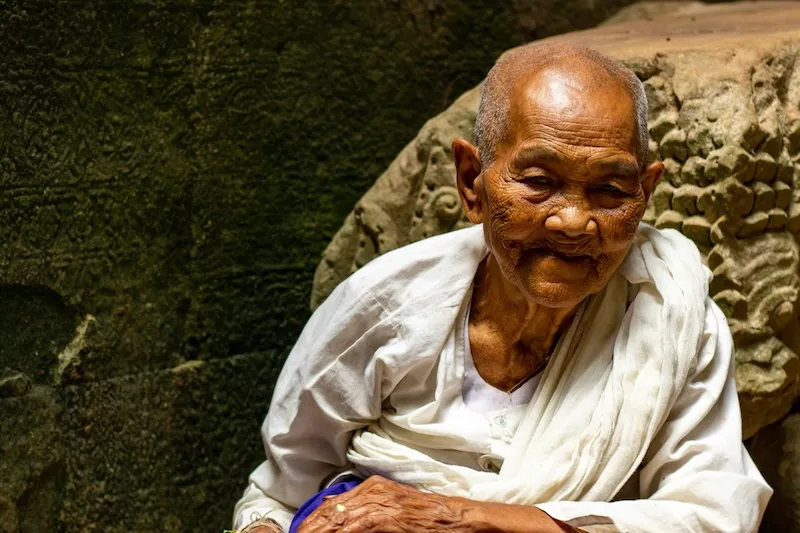
In Khmer culture, elders are revered like royalty. If an elder enters the room, stand up. If they’re speaking, listen attentively. And if they offer you advice, nod politely even if you’re secretly thinking, I can’t understand a word of this. This level of respect extends to authority figures like teachers, monks, and community leaders. It’s all about showing appreciation for wisdom and experience – a cornerstone of how to respect Khmer culture.
Showing more respect is not just about gestures; it’s about understanding the values that underpin Cambodian society. Elders are seen as the keepers of tradition and wisdom, and their guidance is highly valued. By showing respect to elders, you’re not only honouring individuals but also embracing the cultural fabric of Cambodia.
For a deeper connection with Cambodia’s culture Cambodia – What Was It Like In 1997 When I First Visited shares my first-hand experience of a rapidly changing country and the importance of respecting its people.
4. Hands Off the Head (and Keep Your Feet to Yourself)
In Khmer culture, the head is considered the most sacred part of the body, and it’s seen as disrespectful to touch someone’s head, especially children. So, no patting kids on the head (no matter how adorable they are). Similarly, you should never point your feet at people or sacred objects—this is considered highly impolite. It’s like the cultural equivalent of double-dipping your chip at a party—just don’t do it. These cultural practices highlight the importance of respecting Khmer culture and its values around personal space and the sanctity of the body.
5. Treat Buddha with Respect (He’s Not a Selfie Prop)
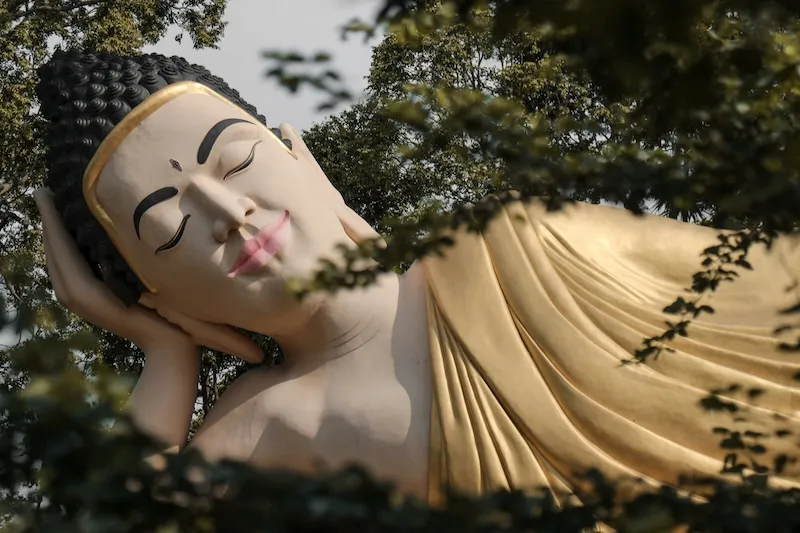
Buddhism is at the heart of Cambodian culture, with around 97% of the population identifying as Buddhists. Present in Cambodia since at least the 5th century, it has shaped the nation’s values, traditions, and way of life.
Buddha statues are not just decorative objects—they hold deep spiritual significance. Here’s how to show respect:
- Never touch a Buddha statue or use it as a backdrop for selfies. It’s not a me, me, me, holiday photo opportunity; it’s sacred.
- In homes with a Buddha altar, be mindful of your posture. Sitting with your feet pointing at the altar is considered disrespectful.
- Think of it like visiting a royal palace—you wouldn’t drape yourself over a throne for a photo. Treat Buddha with the same reverence.
Respecting Personal and Spiritual Boundaries
Khmer culture places great emphasis on respect, not just for religious icons but for people too.
Avoid Touching the Head
In Cambodian tradition, the head is the most sacred part of the body, as it is closest to the heavens. Touching someone’s head—even playfully—is deeply disrespectful.
- What to do instead: Keep gestures friendly but respectful. Even with children, unless you’re closely related, it’s best to avoid touching their heads.
Mind Your Feet
Feet, being the lowest part of the body, is considered unclean in Khmer culture. Pointing them at people, especially elders or religious objects, is seen as highly disrespectful.
- What to do instead: When sitting, tuck your feet under you or to the side, particularly in temples or homes.
Why This Matters
These customs aren’t just about etiquette—they reflect the Khmer values of humility, respect, and spirituality. By embracing them, you’re not just being polite; you’re honouring a culture that has endured for centuries.
6. Family Comes First (Even if It’s a Big One)
Family is at the heart of Khmer society. Many Khmer people live in extended families, and this close-knit bond is deeply valued. Be mindful of the importance of family when making plans or interacting with locals. It’s common for family to be involved in important decisions, and showing interest in family life will deepen your connection with the community. Just don’t ask too many personal questions—no one likes a nosy parker. Understanding this dynamic is essential to respect Khmer culture.
To understand how to give back to the community, I encourage you to read Pay It Forward In 1 Astonishing Life-Changing Way, a powerful story on how small actions can make a huge impact, and 10 Powerful Reasons To Read And KIRC’s Impact On Learning.
7. Avoid Public Displays of affection, Anger or Frustration

In Khmer culture, maintaining harmony and avoiding public confrontations is highly valued. Anger, shouting, or overt frustration can be seen as a loss of face and is considered disrespectful. If you find yourself in a difficult situation, it’s better to remain calm and composed, addressing issues privately rather than in front of others. This is a subtle but important way to respect Khmer culture and its emphasis on social harmony.
8. Dress Respectfully
No Bikinis or being shirtless in Public
While Cambodia is home to beautiful beaches, it’s essential to wear a t-shirt or appropriate clothing in public spaces. Walking around in a bikini or scanty attire can be considered disrespectful in some areas, especially in towns and villages. Modesty in dress is an important aspect of Khmer culture, so be sure to keep your attire respectful when outside of beach areas.
9. Respect Dogs and Animals
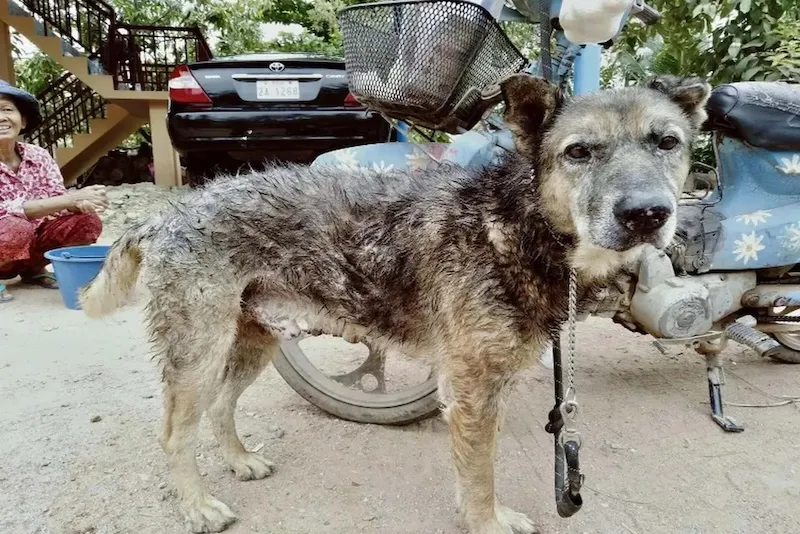
Some visitors, unfamiliar with Khmer culture, might attempt to use sticks or aggressive methods to deal with street dogs. This approach often escalates aggression. The locals, however, have learned that simply bending down to greet the dog or pretending to throw something is more effective. Khmer people understand that animals respond better to calm gestures, not fear tactics. Showing kindness to animals is another way to respect Khmer culture and its values.
If you’re passionate about animal welfare, learn more about the efforts I make in Kampot to support street dogs in Help 2 Transform The Lives Of Street Dogs In Kampot, Cambodia.
10. Keep Your Cool (No Road Rage, Please)
Driving in Cambodia might look like organised chaos to outsiders, but there’s a rhythm to it that locals understand instinctively. Instead of getting frustrated or trying to impose your ideas of how the roads should work, take a step back and observe. The Khmer approach to driving is built on flow, patience, and an unspoken understanding—not on honking aggression, or rigid rules.
Rather than barking at tuk-tuk drivers or shaking your fist at motorbikes weaving through traffic, embrace the local way. Khmer culture values harmony, and that extends to the roads. So, take a deep breath, go with the flow, and remember—you’re a guest in their country, not their driving instructor.
Takeaway
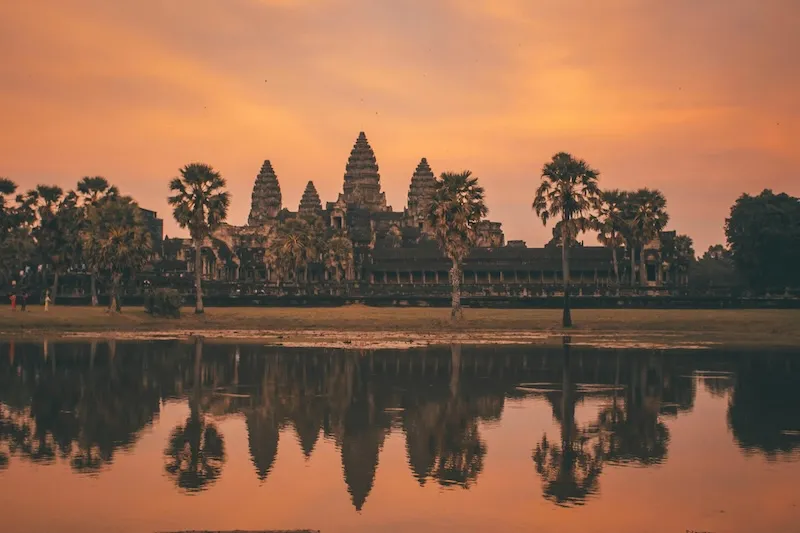
By embracing these simple yet meaningful ways to respect Khmer culture, you won’t just gain a deeper understanding of Cambodia—you’ll also build genuine, lasting connections with its people. Your efforts contribute to preserving and appreciating this rich culture while fostering an atmosphere of mutual respect.
I’ve been learning Khmer for years, but sadly, I never have enough time to progress as much as I’d like—mainly because I’m always busy teaching English! My next goal is to hire a full-time Khmer teacher to help me improve even more. If anyone out there wants to help, drop a comment below—I’d love to hear from you!
For more inspiration on shaping your journey in Cambodia, explore Seize 2025 | Take Charge And Create The Life You Desire
Do you have any other tips on respecting Khmer culture? Share them in the comments below and help others appreciate the beauty of Cambodia’s traditions!






